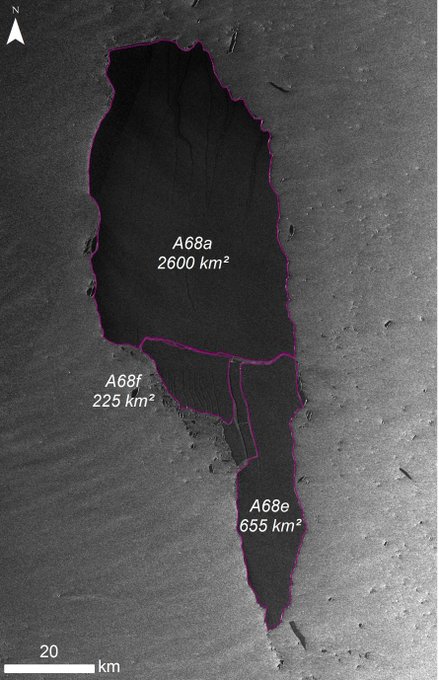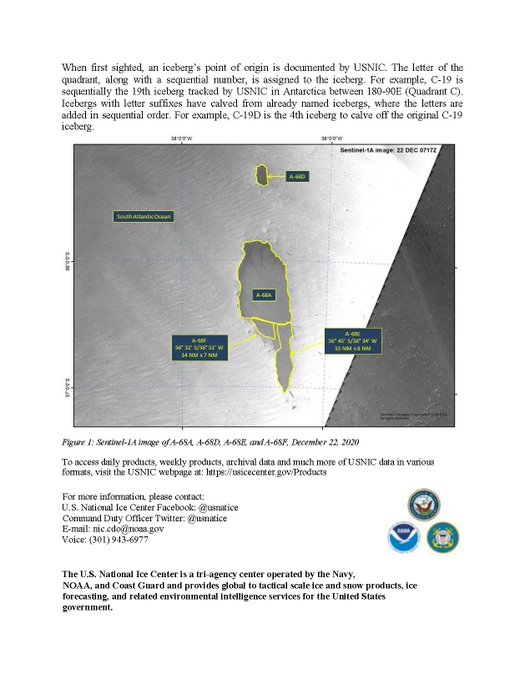
One of the four largest and most observed giant icebergs A68a – which had been drifting through the South Atlantic – has cracked up, reported the BBC.
Although cracks were very noticeable on Monday, they hadn't by that stage cut right through A68a.

"Nearly three-and-a-half years since it calved away from Larsen C Ice Shelf, Iceberg A68a - the fourth largest on record - is finally beginning to disintegrate," observed Adrian Luckman from Swansea University, UK.
When A68 first calved from Antarctica, it measured almost 6,000 sq km - about a quarter of the size of the Wales. To put Tuesday's remnant A68a in some context - 2,600 sq km still bigger than Greater London, which covers about 1,500 sq km of land, noted the BBC.

The calving of bergs at the forward edge of this shelf is a very natural behaviour. The shelf will maintain an equilibrium and the ejection of bergs is one way it balances the accumulation of mass from snowfall and the input of more ice from the feeding glaciers. Some argue that the break-up is a natural process. However, the shortening of time lapse therein tells otherwise i.e. another impact of global warming.
Just last week, a big piece broke from A68a and this was called A68d. Two of the largest fragments identified by EU based satellite Sentinel-1 on Tuesday have already been named A68e and A68f by the US National Ice Center.
Although cracks were very noticeable on Monday, they hadn't by that stage cut right through A68a.

"Nearly three-and-a-half years since it calved away from Larsen C Ice Shelf, Iceberg A68a - the fourth largest on record - is finally beginning to disintegrate," observed Adrian Luckman from Swansea University, UK.
When A68 first calved from Antarctica, it measured almost 6,000 sq km - about a quarter of the size of the Wales. To put Tuesday's remnant A68a in some context - 2,600 sq km still bigger than Greater London, which covers about 1,500 sq km of land, noted the BBC.

The calving of bergs at the forward edge of this shelf is a very natural behaviour. The shelf will maintain an equilibrium and the ejection of bergs is one way it balances the accumulation of mass from snowfall and the input of more ice from the feeding glaciers. Some argue that the break-up is a natural process. However, the shortening of time lapse therein tells otherwise i.e. another impact of global warming.
Just last week, a big piece broke from A68a and this was called A68d. Two of the largest fragments identified by EU based satellite Sentinel-1 on Tuesday have already been named A68e and A68f by the US National Ice Center.
